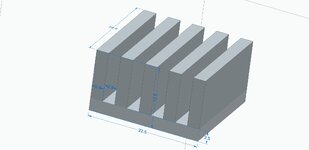engr_joni_ee
Advanced Member level 3

I have designed a heat sink.
The dimensions are shown in attachment. I am bit concerned with the 1.5 mm.
Is that possible to manufacture ?



The dimensions are shown in attachment. I am bit concerned with the 1.5 mm.
Is that possible to manufacture ?



